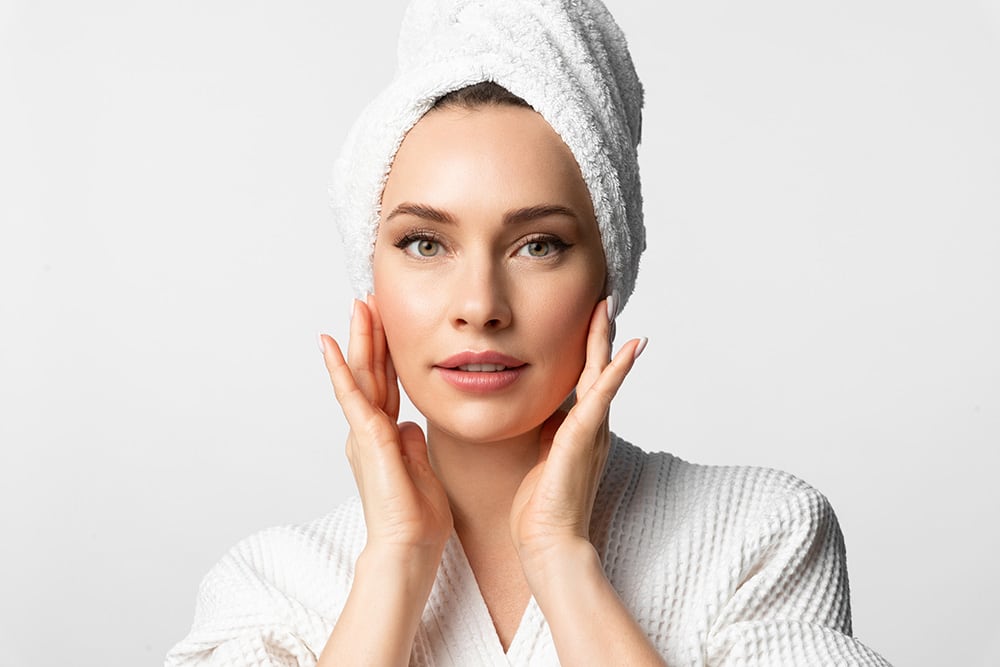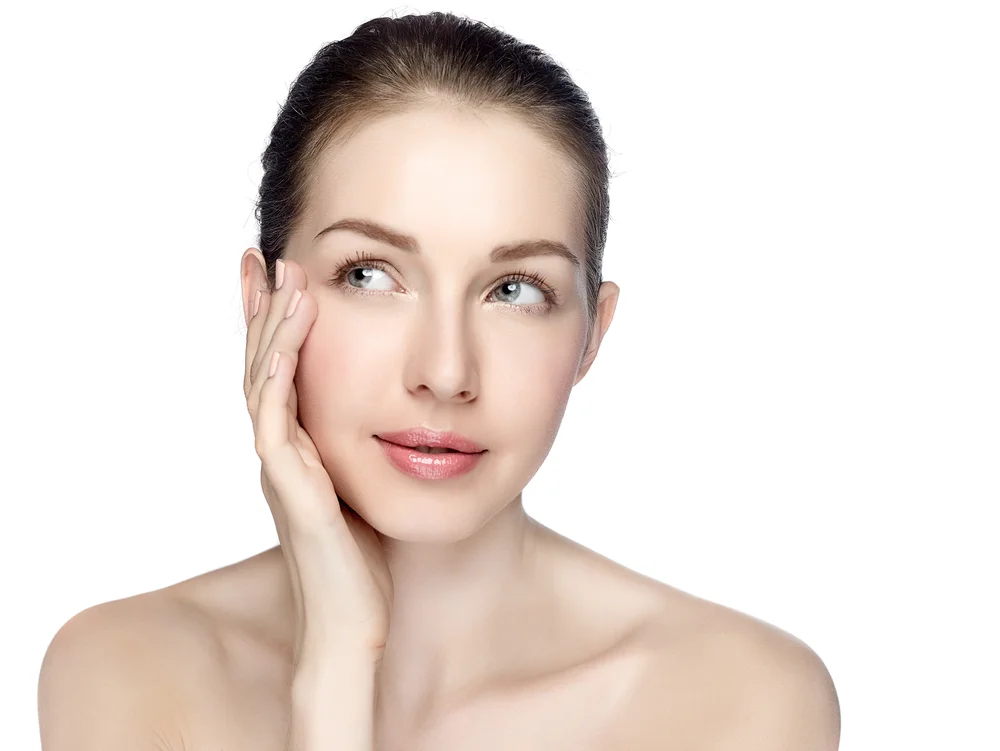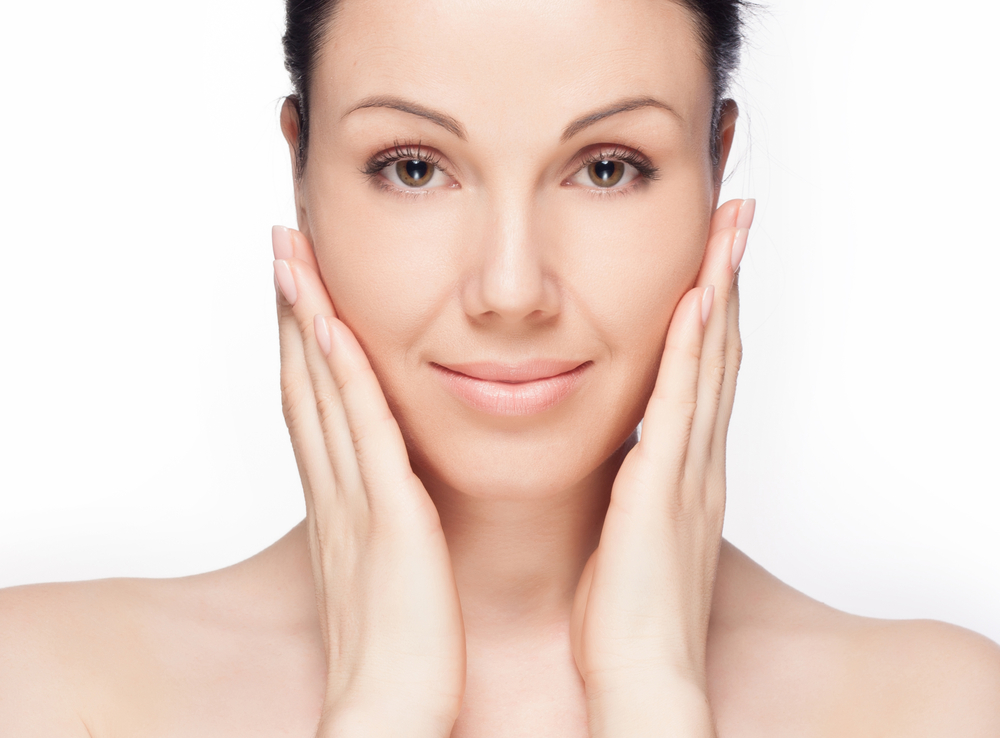Chemical Peels And Laser Skin Resurfacing
For many patients, facial chemical peels and laser skin resurfacing are effective treatment options for addressing signs of aging and other common skin concerns. The use of chemical peels has been a long-standing therapy to help reduce fine lines and brown spots, as well as to improve the texture of the skin. Chemical peels can often be very effective on their own, or they can serve as complements to surgical procedures such as blepharoplasty (eyelid surgery) and rhytidectomy (facelift) for more comprehensive rejuvenation. Additionally, laser skin resurfacing is another treatment option that can be used to rejuvenate aging skin and battle cumulative photodamage or sun exposure that results in wrinkles and uneven pigmentation.
Our facial plastic surgeon, Scott Shadfar, MD, evaluates each patient based on their unique needs and goals, skin type, and the concerns they wish to address. He tailors treatment for each individual patient to maximize the potential for beautiful results that meet – or even exceed – expectations.

What Does The Recovery Process For Chemical Peels Entail?
The amount of downtime associated with chemical peels will depend on the depth of treatment. More superficial peels have minimal downtime of about 24 hours. Medium depth chemical peel patients can expect 5-7 days of recovery, while deep chemical peel patients will have 8-12 days of downtime, followed by several weeks of pink-red skin coloration as the skin heals. For medium and deep chemical peel patients, Dr. Shadfar will see the patient in the clinic the morning after the surgery, and check all treated areas. Depending on the depth of treatment, the patient may experience tightness to the face, skin discomfort similar to a sunburn, and facial swelling. The patient can use cool compresses, keep the head elevated, and continue with meticulous local wound care measures until the skin has completely healed. We ask those patients traveling from out of town to stay for routine checks during this 1-2 week time period.
“Dr. Shadfar and his team are absolutely amazing! They are very kind, caring and professional.”
What Is The Technique For Laser Skin Resurfacing?
There are various laser technologies available. Depending on the area treated and depth of resurfacing, most procedures can be performed in the office with the aid of topical anesthetic creams. For patients with more pronounced skin damage and wrinkling, a deeper sedation or general anesthetic will be required. Laser skin resurfacing is an outpatient procedure.
Dr. Shadfar and his team use Intense Pulsed Light (IPL), which is a state-of-the-art technique developed by Lumenis® – a leading manufacturer of minimally invasive aesthetic technologies. The Stellar M22 IPL treatment can be customized to improve the appearance of over 30 skin issues and concerns, including vascular lesions, unwanted hair, hyperpigmentation, and active acne.
Depending on the specific condition being addressed, the team can seamlessly adjust the settings of the IPL device to deliver precise treatment and optimal results.
Fotona Erbium and Nd-YAG laser treatments are a unique form of non-ablative thermal stimulation with a gentle dual-tissue regeneration process to achieve highly controlled and safe collagen tightening and new collagen formation within the tissue. This addresses fine lines and pigmentary challenges for patients. Additionally, patients can observe an immediate tightness and freshness, as well as a prolonged rejuvenation effect, making it ideal for maintenance treatments as well.

What Does The Recovery For Laser Skin Resurfacing Entail?
The amount of downtime associated with laser skin resurfacing will depend on the depth of treatment. More superficial or mild laser resurfacing patients typically have minimal downtime. Medium depth laser resurfacing patients can expect 5-7 days of recovery, while deep laser treatment patients will have 8-12 days of downtime. Dr. Shadfar will see the patient in the clinic and check all treated areas the morning after treatment. Patients may experience tightness to the face, skin discomfort similar to a sunburn, and possible facial swelling, depending on their specific treatment plan. To optimize the results, Dr. Shadfar recommends individuals use cool compresses, keep the head elevated, and continue with local wound care measures until the skin has completely healed. We ask patients traveling from out of town to stay for routine checks during this time period.
Frequently Asked Questions About Chemical Peels And Laser Skin Resurfacing
Which Skin Conditions Can A Chemical Peel Improve?
A chemical peel is a mix of different concentrations and solutions designed to allow separation and peeling of the skin’s outer layers in order to encourage the growth of new skin underneath. As a result, the treatment can address a wide range of aesthetic concerns existing on the surface of the skin. Depending on the type of chemical peel utilized, it can be used to reduce signs of sun damage, lighten hyperpigmentation and acne scars, diminish signs of aging, and improve the overall texture and tone of an individual’s complexion.
What Is The Difference Between Superficial, Medium, And Deep Chemical Peels?
Depending on the extent of a patient’s skin condition or dermal imperfection, the depth of a chemical peel can be customized according to individual needs. Superficial chemical peels reach the layers of the skin closest to the surface and are often ideal for sensitive skin types. They are generally considered safe and effective for all variances of skin, and provide more conservative exfoliation when compared to medium and deep peels.
Medium chemical peels typically provide exceptional results for mild wrinkles, sun damage, and/or other moderate concerns. Capable of reaching deeper layers of skin than a superficial peel, this treatment generally requires 3-5 days of downtime. Deep chemical peels reach the innermost dermal layers of the skin and can be very effective for treating more extensive sun damage, wrinkle formation, acne, hyperpigmentation, and more. Deep peels usually necessitate 7-10 days of downtime, with a longer period of post-treatment redness in the area of concern when compared to medium peels; however, results from a deep chemical peel can be long-lasting, enduring for years in some cases.
who Is A Candidate For Chemical Peels?
Chemical peels can be applied to a range of different skin types with the applicable cosmetic concerns. Depending on the type of peel utilized, a patient may not benefit from a chemical peel if they:
- Have a history of abnormal skin scarring
- Have used certain acne treatments in the last year
- Have a naturally darker skin tone, as this can lead to additional hyperpigmentation
- Have a tendency to develop extra pigmentation around scars
Dr. Shadfar can examine an individual’s unique skin tissue and medical history to determine whether they are an ideal candidate for a chemical peel. Those whose skin does not respond well to chemical solutions may benefit from a number of other treatments, such as laser skin resurfacing, which is a minimally invasive procedure that can achieve comparable results to a chemical peel, including diminished signs of aging, reduced sun damage, and improved pigmentation.
What Will I Look Like After Chemical Peel Treatment?
Immediately following chemical peel therapy, the treated skin may look slightly red. Depending on the depth of your chemical peel, the post-treatment redness is comparable to a mild sunburn and should diminish as the skin continues to heal. Individuals may notice a gradual peeling and flaking of their skin as the surface layers of the dermis are separated and new skin is regenerated. After the peeling and recovery period, patients generally report an overall improved texture and appearance of their skin for a smoother, more radiant, and rejuvenated complexion.
Which Areas Can Be Treated By Laser Skin Resurfacing?
Laser technology can be used to target a number of different body regions with unparalleled precision. Laser skin resurfacing can be utilized to aesthetically improve virtually any dermal area with exposure to sun damage, hyperpigmentation, acne, or other applicable cosmetic concerns. The most commonly treated areas include the face, hands, chest, and neck.
What Can Laser Skin Resurfacing Do For Me?
The results yielded by laser skin resurfacing depend on each patient’s unique needs and skin tissue anatomy; however, the treatment can generally reverse and soften visible sun damage, lighten the appearance of pigmented lesions and acne scars, and improve certain aesthetic skin irregularities.
Treatment from the targeted laser technology can also encourage skin cell turnover, thereby stimulating natural collagen production using minimally invasive techniques. By catalyzing the growth of collagen, laser skin resurfacing can provide adjunctive benefits for skin elasticity and an overall younger-looking complexion.
Can Laser Skin Resurfacing Be Combined With Other Treatments?
Laser skin resurfacing is generally a very versatile treatment that can be combined with others to provide more comprehensive rejuvenation. When addressing the face, pairing the procedure with surgical options designed to improve skin laxity and restore lost volume, such as a facelift, can optimize the results of an individual’s facial enhancement.
Does The Laser Skin Resurfacing Procedure Hurt?
Patients generally report minimal discomfort during laser skin resurfacing. Depending on the depth of your treatment and the nature of your skin concern or condition, sedation or anesthesia may be utilized. For many patients, only a topical anesthetic designed to numb the treated area is required. In cases that necessitate a larger degree of resurfacing, Dr. Shadfar may employ nerve blocks or even general anesthesia to provide the highest level of patient comfort possible.
How Does Intense Pulsed Light (IPL) Improve The Look Of My Skin?
The intense pulsed light emitted during IPL therapy can utilize different wavelengths to non-invasively penetrate skin tissue, reaching the biological elements within the dermis that may be causing a specific skin issue or condition. The treatment emits a range of wavelengths, which can be optimized for different applications and skin types for versatile skin rejuvenation.


